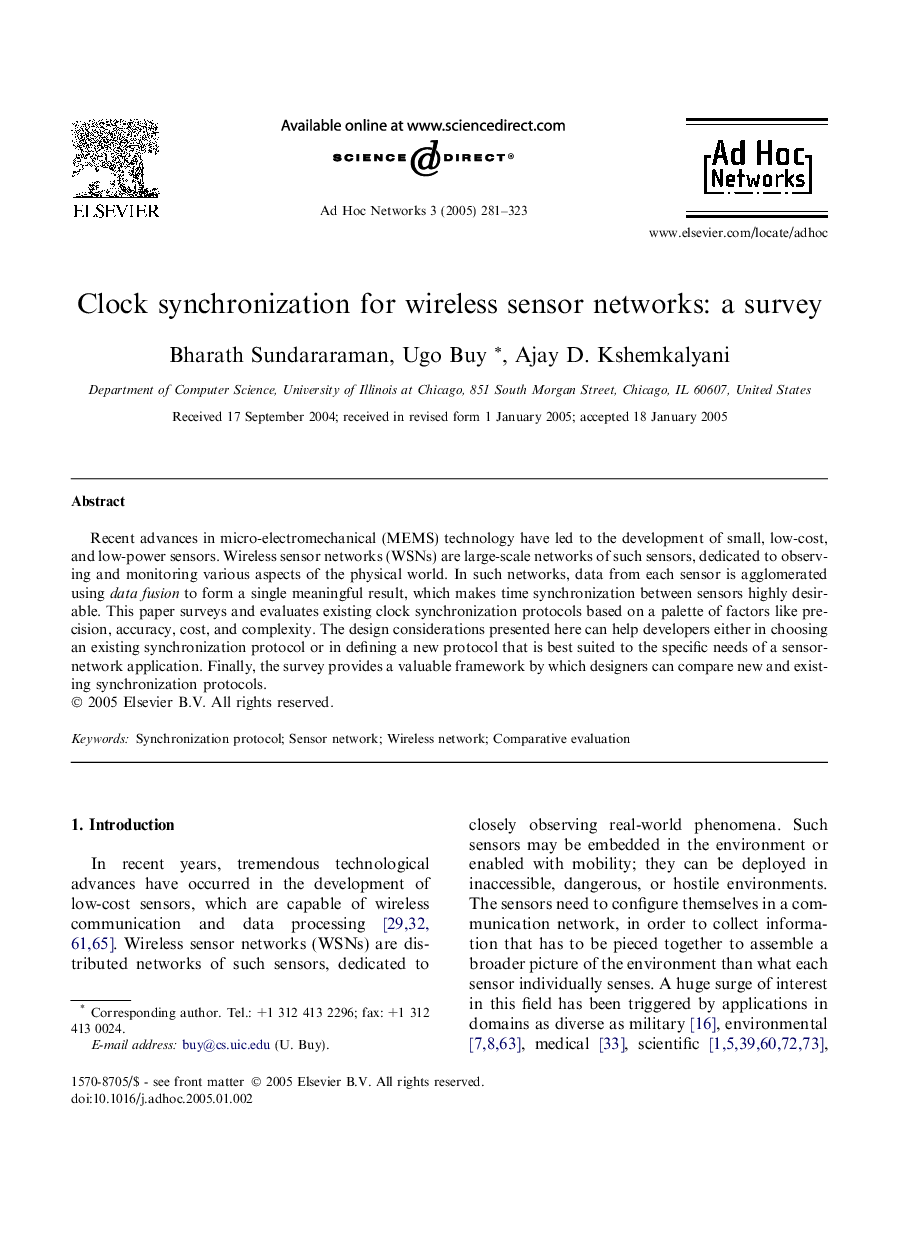| Article ID | Journal | Published Year | Pages | File Type |
|---|---|---|---|---|
| 10338087 | Ad Hoc Networks | 2005 | 43 Pages |
Abstract
Recent advances in micro-electromechanical (MEMS) technology have led to the development of small, low-cost, and low-power sensors. Wireless sensor networks (WSNs) are large-scale networks of such sensors, dedicated to observing and monitoring various aspects of the physical world. In such networks, data from each sensor is agglomerated using data fusion to form a single meaningful result, which makes time synchronization between sensors highly desirable. This paper surveys and evaluates existing clock synchronization protocols based on a palette of factors like precision, accuracy, cost, and complexity. The design considerations presented here can help developers either in choosing an existing synchronization protocol or in defining a new protocol that is best suited to the specific needs of a sensor-network application. Finally, the survey provides a valuable framework by which designers can compare new and existing synchronization protocols.
Related Topics
Physical Sciences and Engineering
Computer Science
Computer Networks and Communications
Authors
Bharath Sundararaman, Ugo Buy, Ajay D. Kshemkalyani,
